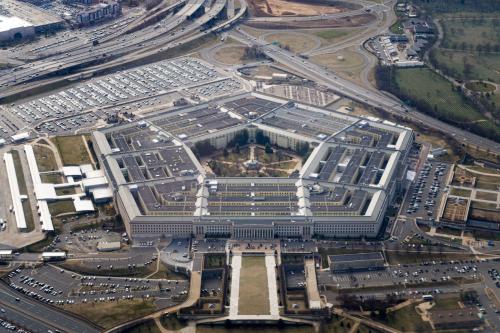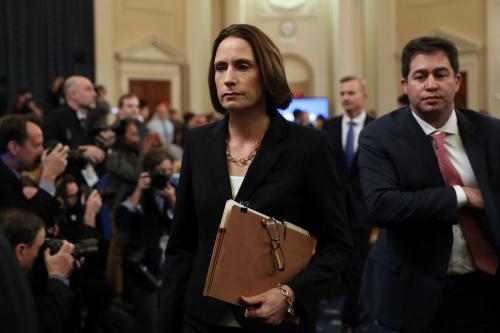Introduction
President Obama, in his second full day in office, has issued three major executive orders dealing with detention and interrogation in the war on terrorism. The orders, which have been received as major policy shifts in counterterrorism law and strategy, actually vary a great deal in their consequence. The most eagerly anticipated one, which orders an eventual closure of the detention facilities at Guantánamo Bay, Cuba, is actually far less significant than it may appear. It is also far less important than the interrogation order that Obama signed along with it. In conjunction with a companion order establishing a task force to study the future of detention policy, it answers none of the major detention-policy questions facing America today. Instead, it merely sets up a process by which policymakers will do so over the next year.
By contrast, the interrogation order is, on its own, hugely consequential. It closes down the CIA’s secret prisons abroad, repudiates past legal guidance as to acceptable interrogation limits, and critically, it requires that CIA interrogations follow the mild, non-coercive interrogation policies of the military.
While detention, interrogation, and Guantánamo are all subjects on which I have written extensively and have strong views, my purpose in this memo is not to evaluate these orders. It is simply to explain what they do, what they do not do, and what issues they leave open.
The Detention Orders
Obama’s executive order announcing the shutdown of the American detention facility at Guantánamo Bay, Cuba does a lot less than many people seem to imagine.
From much of the early press coverage, a reasonable reader might conclude that Obama had not merely ordered the camp closed within a year, but had ordered all of its 242 detainees either transferred to foreign custody, released, or prosecuted within that time. The New York Times, for example, wrote this morning that the order—then still a draft—“require[s] an immediate review of the . . . detainees still held at the naval base in Guantánamo Bay, Cuba, to determine if they should be transferred, released or prosecuted.” The Washington Post reported that “Officials will review the cases of the . . . prisoners who remain . . . to decide who can be released and who can be put on trial.” While literally true, this reporting rather overstates the severity of the choice Obama’s poses for each detainee.
Obama’s order is not, in fact, a blunt instrument; in fact, it actually doesn’t do all that much. It is careful to preserve all options for each detainee. It does not require any detainee’s release or transfer. It does not require any detainee’s prosecution. It does not preclude the eventual use of military commissions or some other alternative trial venue. And, critically, it does not preclude the continued non-criminal detention of certain—perhaps many—current Guantánamo detainees.
The executive order, in fact, makes only a single clear policy pronouncement—one that both Obama and his opponent for the presidency, Sen. John McCain, both promised to bring about: the closure of the detention facilities at Guantánamo. Any detainees still in American custody one year from today will reside at some other facility.
Obama’s order makes this point clear by declaring that “The detention facilities at Guantánamo . . . shall be closed as soon as practicable, and no later than 1 year from the date of this order.” But even this key passage openly contemplates that non-criminal detentions will persist beyond that time. Any remaining detainees still in custody, the paragraph reads, “shall be returned to their home country, released, transferred to a third country, or transferred to another United States detention facility in a manner consistent with law and the national security and foreign policy interests of the United States” (emphasis added). Guantánamo, in short, will close, but Guantánamo detentions may well continue.
Whether they do—and in what form—will depend on the results of the order’s second major section, which requires “A review of the status of each individual currently detained at Guantánamo.” The order places the attorney general in charge of the review, which “shall commence immediately,” and gives several other cabinet officers a role within it. It tasks the review team with several functions, including:
- Assembling information about each detainee;
- Determining “whether it is possible to transfer or release the individuals consistent with the national security and foreign policy interests of the United States” and, if so, determining “whether and how the Secretary of Defense may effect their transfer or release”; and
- Determining whether, among those not cleared for release or transfer, “the Federal Government should seek to prosecute the detained individuals for any offenses they may have committed, including whether it is feasible to prosecute such individuals” in federal court.
The phraseology here is important. Asking whether transfers and releases are possible consistent with national security acknowledges that, in some instances, they may not be possible. Asking whether the Secretary of Defense may, in some instances, be unable to bring about a transfer and release acknowledges that, in some instances, doing so will be profoundly difficult. Asking whether those not released or transferred should face criminal charges acknowledges that, in some cases, they probably should not. Asking whether those trials that do take place are “feasible” in federal court acknowledges the possibility that they are not feasible in that forum but may have to take place elsewhere.
The order then makes quite explicit that trial and release are not the only options. In a paragraph entitled “Determination of Other Dispositions,” it states that for those detainees “whose disposition” is not achieved” by prosecution, release, or transfer, “the Review shall select lawful means, consistent with the national security and foreign policy interests of the United States and the interests of justice, for the disposition of such individuals.”
This paragraph offers the new administration a great deal of wiggle room. It could, for example, result in the continued detention of detainees as “enemy combatants” under the laws of war. It could also result in the creation of some new detention authority. And critically, the order nowhere clarifies how many detainees the review should process by what means. It’s possible, in other words, that the bulk of the roughly 180 detainees not currently cleared for release or transfer could remain in American custody, uncharged, after Guantánamo fades from the scene.
Finally, concerning military commissions, Obama’s order requires that prosecutors freeze current cases and bring no new ones while the review progresses. While this is clearly intended as a step preparatory to shuttering the military commission system entirely, the order conspicuously does not go that far. By contemplating, in fact, the possibility that certain detainees should face charges and cannot feasibly face them in federal courts, it implicitly allows for the possibility that the administration might ultimately choose some other forum for trials. These might include military courts martial, some specialized procedures in federal courts, military commissions, or some combination of systems.
To put it simply, the document lays out a process and an aspiration but it carefully keeps all options on the table and gives the new administration wide latitude to make policy as it learns over the coming year exactly whom it is dealing with. The document could support, and Obama may well intend, a Guantánamo closure that will warm the hearts of human rights activists—one in which every detainee either faces charges or goes home. It could also, however, support a policy that differs from the Bush administration’s Guantánamo policies only in the physical location of the detention site. And it could also support a “third way” type policy, in which the administration seeks congressional support for continued detention in certain circumstances.
Just how open these questions remain becomes clear in a separate executive order Obama issued today, entitled “Review of Detention Policy Options.” This executive order sets up a special task force, composed of most of the same officers who will make up the Guantánamo review group, to conduct “a comprehensive review of the lawful options available to the Federal Government with respect to the apprehension, detention, trial, transfer, release or other disposition of individuals” caught in counterterrorism operations “and to identify such options as are consistent with the national security and foreign policy interests of the United States and the interests of justice.” The task force will report within 180 days. The real policy decisions of the administration on detention will take place between its deliberations and those of the Guantánamo review.
In short, today’s order decides nothing that was not already decided long ago. It merely announces a process by which the new government will make the hard decisions. It is important not to confuse the initiation of this process with its outcome. Today’s order formally seals the fate of Guantánamo, which was in actuality sealed the day both political parties nominated presidential candidates opposed to its continued operation. The fate of Guantánamo’s residents, however, remains as cloudy today as before Obama took his oath.
The Interrogation Order
By contrast, the President’s order concerning CIA interrogation and detention authorities does a great deal more than initiate a process. It takes strong policy stands on key questions—and it marks a significant shift.
For starters, it revokes a great deal of the legal guidance the Bush administration gave the CIA on the subject of interrogation and replaces it with a requirement that CIA interrogations comply with the Army Field Manual. This step, long sought by human rights groups and other critics of the Bush administration’s harsh interrogation policies, ties agency interrogations to a specific set of approved interrogation techniques—to which the military is already bound by law. It eliminates not merely the latitude to conduct highly-coercive interrogations, but the latitude to use indubitably legal techniques that don’t happen to be approved by the Army for use by its interrogators.
This is a tremendous change—albeit one that, with the CIA’s secret prisons program currently depopulated, will probably not impact many detainees in the short term. The whole purpose of reposing some long-term detention authority in the CIA, after all, was to permit the use of interrogation techniques different from those allowed by the military, without lawyers present and without visits from the International Committee for the Red Cross (ICRC). Take away the authority to use a more elaborate, nastier palette of techniques and there is no longer any reason for the CIA to have detention authority at all—other than perhaps the power to hold people in a transient fashion until turning them over to other agencies or countries.
This brings us to the second important change contained in Obama’s order: It revokes the CIA’s detention power, requiring the agency to “close as expeditiously as possible any detention facilities that it currently operates” and clarifying that it “shall not operate any such detention facility in the future.” (The document’s definition of “detention facilities” excludes “facilities used only to hold people on a short-term, transitory basis.) In the future, it goes on, the ICRC must be notified of and given “timely access to any individual detained in any armed conflict in the custody or under the effective control of . . . . the United States Government, consistent with Department of Defense regulations and policies.” In other words, the CIA not only has lost the power to define its own interrogation policies, coercive or not, it has also lost its program of secret prisons.
Many Americans will regard these developments as unqualified goods. The program, which introduced the modern world to the word “waterboarding,” brought great shame on America and gravely damaged its international prestige. It also, however, produced life-saving intelligence—at least, so the intelligence community has long claimed. And the arguments for allowing the CIA more latitude than the military in interrogations are far from trivial.
While Obama’s order is unyielding in its opposition to coercive interrogation, it does contain an important nod to the possibility that the CIA may have legitimate needs for techniques the military does not authorize. This comes in the form of yet another “special task force”—once again composed of many of the same officers and once against charged with reporting to the president in 180 days. This one is tasked with studying “whether the interrogation practices and techniques in [the Army Field Manual], when employed by departments or agencies outside the military, provide an appropriate means of acquiring the intelligence necessary to protect the Nation, and, if warranted, to recommend any additional or different guidance for other departments or agencies.” (The task force will also look at “the practices of transferring individuals to other nations” to make sure that they comply with America’s international obligations and do not enable circumvention of the new domestic interrogation restrictions.) It is possible, in other words, that the CIA will regain some measure of interrogation flexibility as a result of this study. But that’s down the line if it happens at all.
For now, the human rights community has won a huge victory on interrogation—and the president has rebuked those of us who have defended the propriety of a measure of flexibility for the CIA in its highest-stakes interrogations to use coercive practices the Army Field Manual disallows in military interrogations. In his inaugural address, President Obama declared that “we reject as false the choice between our safety and our ideals.” In this order, for better or for worse, he has already put his money where his mouth is.



Commentary
Op-edThe Obama Orders: A Quick and Dirty Analysis
January 22, 2009